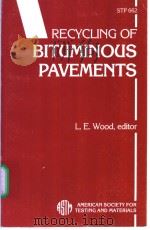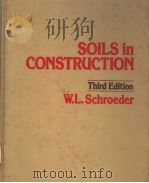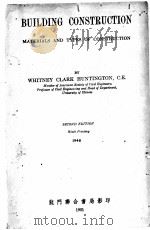《Bituminous Materials in Road Construction》
| 作者 | 编者 |
|---|---|
| 出版 | Her Majesty's Stationery Office |
| 参考页数 | 611 |
| 出版时间 | 1962(求助前请核对) 目录预览 |
| ISBN号 | 无 — 求助条款 |
| PDF编号 | 812507638(仅供预览,未存储实际文件) |
| 求助格式 | 扫描PDF(若分多册发行,每次仅能受理1册) |
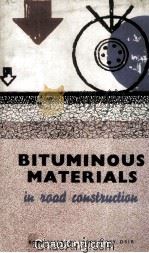
CHAPTER 1.INTRODUCTION1
Historical survey1
Scope of the book2
The properties of bituminous materials3
The structure of flexible roads5
Control of the quality of bituminous road surfacings7
Miscellaneous aspects of bituminous road surfacings7
References8
CHAPTER 2.ROADMAKING AGGREGATES9
Classification and nomenclature9
The effect of production processes on the quality of aggregates12
The testing of aggregates14
Applications of test results18
Summary21
References21
CHAPTER 3.THE ORIGIN,PREPARATION AND CONSTITUTION OF BITUMINOUS ROAD BINDERS23
Introduction23
The origin and preparation of road tar23
The origin and preparation of road bitumen(including natural asphalt)29
The chemical constitution of road tars and bitumens37
Appendix 3.A.Summary of requirements for road tar,road bitumen and lake asphalt in British and other Standards(1959)41
Summary50
References50
CHAPTER 4.BITUMINOUS ROAD EMULSIONS53
Introduction53
Emulsions,emulsifiers and stabilizers53
The preparation and application of emulsions56
Mechanism of breaking of emulsions in surface dressings59
General characteristics of road emulsions61
Uses of emulsions in road construction and maintenance64
Rubberized bitumen emulsions66
Summary66
References67
CHAPTER 5.THE ADHESION OF BITUMINOUS BINDERS TO ROAD AGGREGATES68
Introduction68
Adhesion in the absence of water68
The incidence of water in bituminous surfacings69
Types of adhesion failure caused by water70
Fundamental properties of the binder/stone/water system72
The mechanism of stripping and of adhesion failure74
Adhesion tests77
Methods of improving adhesion82
Appendix 5.A.The static immersion test84
Appendix 5.B.The Road Research Laboratory immersion wheeltracking test85
Summary87
References87
Bibliography88
CHAPTER 6.THE RHEOLOGY OF BITUMINOUS BINDERS89
Introduction89
Viscosity89
Non-linear flow properties107
Elastic properties109
Visco-elastic behaviour of bitumens:an approximate treatment114
Ductility and brittleness119
Summary121
References121
CHAPTER 7.THE MECHANICAL PROPERTIES OF BITUMINOUS MIXTURES125
Introduction125
Dense and open-textured bituminous mixtures125
Resistance of bituminous mixtures to permanent deformation129
Flexibility and brittleness148
Common mechanical tests for bituminous materials153
The value of mechanical tests169
Appendix 7.A.Determination of apparent specific gravity and voids(B.S.598)170
Percentage of voids in the aggregate filled with binder173
Summary173
References173
Bibliography175
CHAPTER 8.THE WEATHERING OF BITUMINOUS MATERIALS176
Introduction176
The action of weather on different types of bituminous road surfacing176
The methods of studying durability178
The influence of the composition of the bituminous mixture on its durability179
Full-scale road experiments on the durability of coated-macadam wearing courses180
Full-scale road experiments on the durability and surface texture of dense bituminous surfacings183
Factors affecting the durability of bituminous binders185
Durability tests195
The improvement of the performance of bituminous binders200
Appendix 8.A.The apparatus and procedure for the pressure oxidation test using the e.v.t.method of measurement204
Summary206
References206
CHAPTER 9.THE DESIGN OF FLEXIBLE ROAD PAVEMENTS210
Introduction210
The constituents of flexible pavements210
Types of flexible pavement210
The requirements for the road pavement211
The stresses in road structures212
Empirical methods of pavement design218
Recommendations for the structural design of new flexible pavements223
Full-scale pavement design experiments224
The design of hard shoulders230
Summary231
References231
CHAPTER 10.COATED MACADAM AND FINE COLD ASPHALT233
Introduction233
Development and general properties of coated macadam233
Basecourse and single-course coated macadam235
Wearing course coated macadam240
Coated macadam as a road base245
Fine cold asphalt246
Appendix 10.A.Summary of requirements for coated macadam in British Standards and related specifications247
Summary256
References256
CHAPTER 11.DENSE BITUMINOUS SURFACINGS258
A.ROLLED ASPHALT258
Introduction258
Nature of rolled asphalt258
Advantages of rolled asphalt as a surfacing material260
Selection of composition261
Application of coated chippings to the surface267
Resistance to skidding269
Basecourse material270
Rolled asphalt as a road base material271
Thin-application rolled asphalt272
Laying of rolled asphalt272
Cracking of asphalt on concrete274
Rolled asphalt for tracked vehicles274
Coloured rolled asphalt274
B.DENSE TAR SURFACING275
Introduction275
Laboratory design of dense tar surfacing275
Full-scale road experiments281
The commercial use of dense tar surfacing286
Summary290
References290
Bibliography291
CHAPTER 12.SURFACE DRESSING292
Introduction292
The functions and requirements of a surface dressing293
The factors affecting the quality and life of surface dressings294
The binder294
The chippings297
The external conditions299
The application of the materials301
Surface dressing of non-bituminous surfacings310
Surface dressing with emulsion binder311
Surface dressing under difficult conditions312
Summary314
References315
Bibliography315
CHAPTER 13.PREVENTION OF WET-WEATHER DAMAGE TO SURFACE DRESSINGS316
Introduction316
Methods of preventing wet-weather damage317
Details of methods of preventing wet-weather damage to surface dressings323
Appendix 13.A.Specification for the solution of an adhesion agent in light creosote oil for use in surface dressing in wet weather331
Appendix 13.B.The Road Research Laboratory immersion tray test332
Summary333
References333
CHAPTER 14.SURFACE DRESSING MACHINERY334
Binder distributors334
Fire precautions on pressure sprayers348
Gritting machines350
Rollers for surface dressing354
Summary355
References355
CHAPTER 15.COATED-MACADAM AND ASPHALT MIXING PLANTS357
Introduction357
General types of mixing plant357
The feeding system362
The drying and heating system363
The screening system367
Proportioning and batching of aggregate372
Proportioning of filler377
Heating and proportioning of binder378
Mixing units386
Storage of mixed materials392
Dust collection393
Temperature control398
Summary402
References402
CHAPTER 16.MACHINERY FOR THE LAYING OF BITUMINOUS SURFACINGS403
Introduction403
Heating-and-planing machinery403
Spreading machinery406
Rollers and rolling412
Summary414
References414
Bibliography415
CHAPTER 17.WET-AGGREGATE PROCESSES FOR MAKING BITUMINOUS ROAD SURFACINGS416
Introduction416
Coating wet aggregates with bitumen emulsion417
Coating wet aggregates with binders containing adhesion agents419
The wet-aggregate(hydrated lime)process422
Appendix 17.A.Compositions of mixed materials for the wet-aggregate(hydrated lime)process428
Appendix 17.B.Test procedure for use with the wet-aggregate(hydrated lime)process434
Summary437
References437
CHAPTER 18.BITUMINOUS SURFACINGS FOR CITY STREETS439
Introduction439
Rolled asphalt440
Mastic asphalt440
Compressed natural rock asphalt443
Unheated natural-rock-asphalt powder with coated chippings—'rock(non-skid)asphalt'445
Lake asphalt sand carpet with contiguous coated chippings447
Dense tar surfacing and fine cold asphalt448
Appendix 18.A.Naturally occurring bitumen450
Appendix 18.B.The treatment of granite setts and wood blocks452
Summary453
References453
Bibliography454
CHAPTER 19.THE'RETREAD'PROCESS455
Introduction455
Materials suitable for the retread process455
Method of carrying out the retread process457
Summary461
References461
CHAPTER 20.THE SAMPLING AND ANALYSIS OF BITUMINOUS ROAD MATERIALS462
Introduction462
Methods of sampling bituminous road mixtures463
Determination of the proportions of binder,coarse and fine aggregate,filler and moisture468
Recovery of binder for examination482
Determination of apparent specific gravity and voids485
Summary489
References490
CHAPTER 21.THE SAMPLING AND TESTING OF BITUMINOUS ROAD BINDERS491
Introduction491
Sampling of bituminous road binders493
Tests for bitumens and tars496
Tests for road emulsions518
Appendix 21.A.Relationship between technical viscosity scales521
Summary524
References525
CHAPTER 22.CONTROL IN THE MANUFACTURE AND LAYING OF BITUMINOUS ROAD MATERIALS526
The need for control526
Monetary savings due to control527
Control of surface dressing work530
Control when mixing and laying pre-mixed bituminous surfacings534
Keeping of records540
Summary541
References541
CHAPTER 23.THE PREVENTION AND CURE OF CRACKS IN BITUMINOUS SURFACINGS OVER CONCRETE542
Introduction542
The causes of cracking542
The prevention of cracking547
The treatment of cracked surfacings553
Summary554
References555
CHAPTER 24.RUBBER IN BITUMINOUS ROAD MATERIALS557
Introduction557
Types of natural rubber used in bituminous road surfacings558
The effects of rubber on the properties of bituminous binders559
The effects of heat and mastication on rubber in bitumen561
Methods of mixing rubber with road materials563
Rubberized binders in surface dressing564
Rubberized mastic asphalt565
The use of rubber in rolled asphalt and bitumen macadam567
Latex in bitumen emulsions569
Rubberized slurry seals569
Appendix 24.A.The determination of rubber content by iodine value and specific viscosity measurements569
Summary571
References571
CHAPTER 25.ROAD-MARKING MATERIALS574
Introduction574
Types of road-marking material574
Requirements of road-marking materials575
Materials for centre-line and traffic-lane markings for roads other than city streets576
Marking materials for city streets585
Summary587
References588
CHAPTER 26.EQUIPMENT FOR A CENTRAL LABORATORY AND A MOBILE LABORATORY FOR THE TESTING OF BITUMINOUS ROAD MATERIALS590
Introduction590
Safety precautions590
Equipment required591
CHAPTER 27.DEFINITIONS OF TERMS596
Introduction596
Definitions596
INDEX601
1962《Bituminous Materials in Road Construction》由于是年代较久的资料都绝版了,几乎不可能购买到实物。如果大家为了学习确实需要,可向博主求助其电子版PDF文件(由 1962 Her Majesty's Stationery Office 出版的版本) 。对合法合规的求助,我会当即受理并将下载地址发送给你。
高度相关资料
-

- TRANSPORTATION RESEARCH RECORD NO.1282 MATERIALS AND CONSTRUCTION TRANSPORTATION CONSTRUCTION 1990
- 1990
-
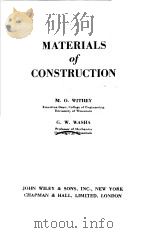
- MATERIALS OF CONSTRUCTION
- JOHN WILEY AND SONS INC
-

- PRESSURE COMPONENT CONSTRUCTION DESIGN AND MATERIALS APPLICATION
- 1980 VAN NOSTRAND REINHOLD COMPANY
-
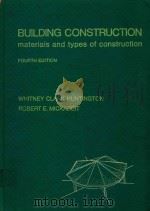
- BUILDING CONSTRUCTION MATERIALS AND TYPES OF CONSTRUCTION FOURTH EDITION
- 1975 JOHN WILEY & SONS
-

- FUNDAMENTALS OF BUILDING CONSTRUCTION MATERIALS AND METHODS
- 1985 JOHN WILEY
-

- GEOTECHNICAL MATERIALS IN CONSTRUCTION
- 1996 MCGRAW-HILL
-

- CONSTRUCTION MATERIALS METHODS CAREERS
- 1983 THE GOODHEART-WILLCOX COMPANY,INC.
-

- Wood in construction
- 1976 Construction Press
-

- ARCHITECTURAL MATERIALS FOR CONSTRUCTION
- 1996 MCGRAW-HILL
-

- CONSTRUCTION SCIENCE & MATERIALS 2
- 1981 BUTTERWORTHS TECHNICIAN SERIES
提示:百度云已更名为百度网盘(百度盘),天翼云盘、微盘下载地址……暂未提供。➥ PDF文字可复制化或转WORD

